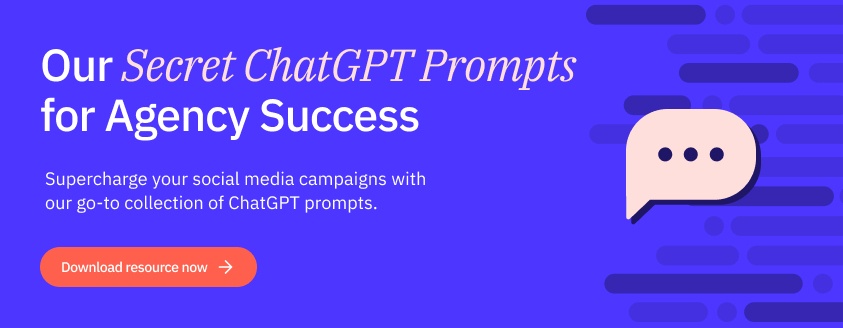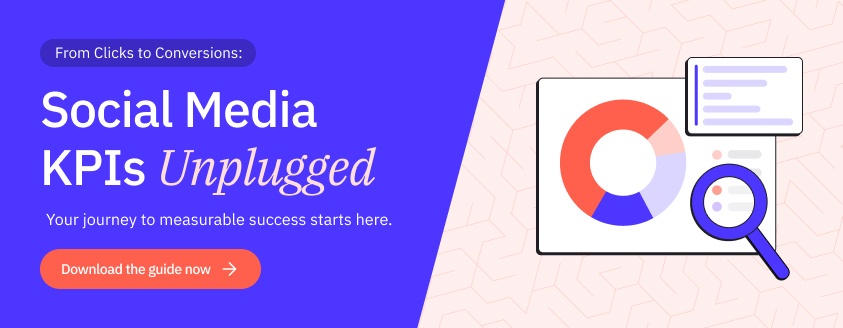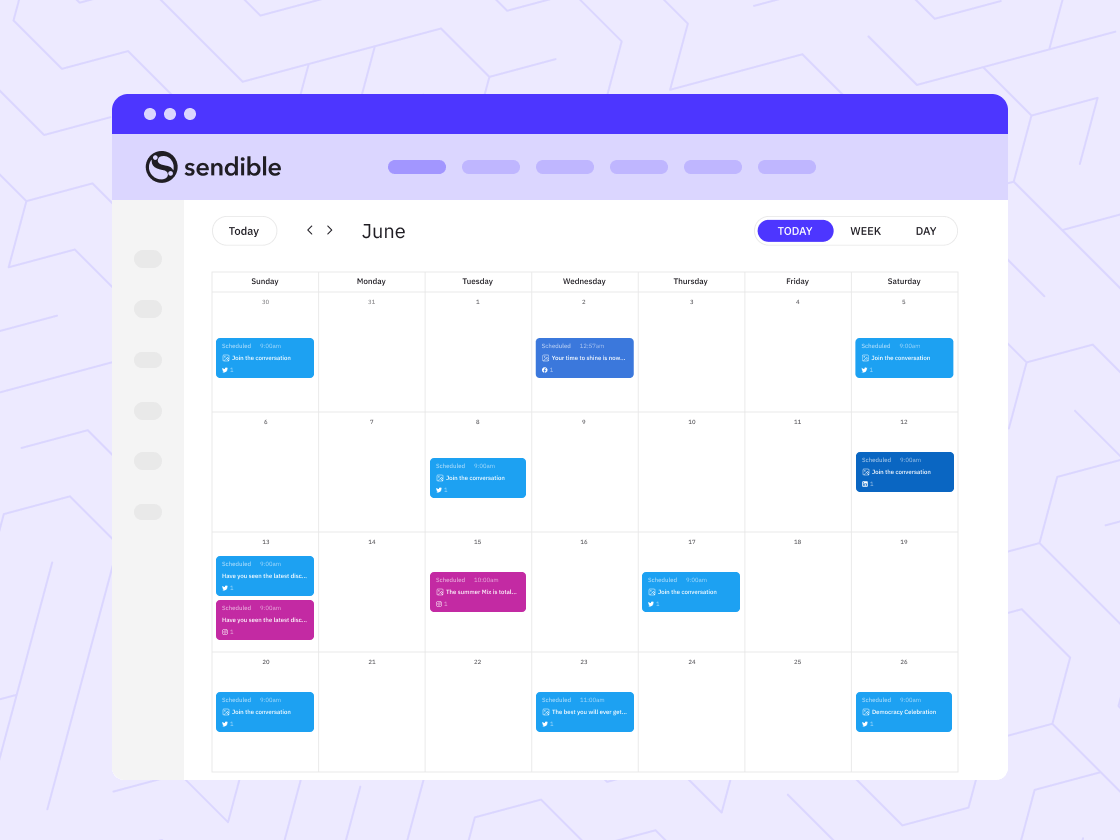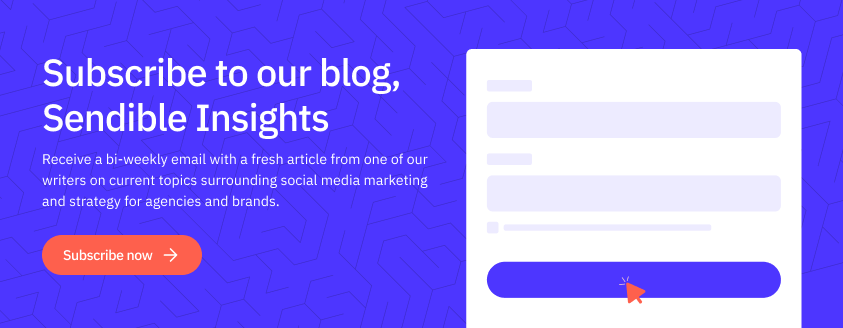Sendible insights How Can You Use ChatGPT Prompts to Write the Perfect Outreach Email for Your Influencer Marketing Campaign?
Artificial Intelligence is a category of tools that has started becoming increasingly important in creating marketing actions.
And since marketers are forever on the lookout for new tools and tactics to remain ahead of their competitors, the use of AI is a given.
At its very core, AI is a computer’s ability to process, understand, and utilise data to learn, reason, and understand meanings and patterns.
In marketing, AI allows computers to adapt and complete complicated tasks like distinguishing fine patterns in consumer behaviour, gathering and analysing information, and presenting conclusions that lead to marketing actions:
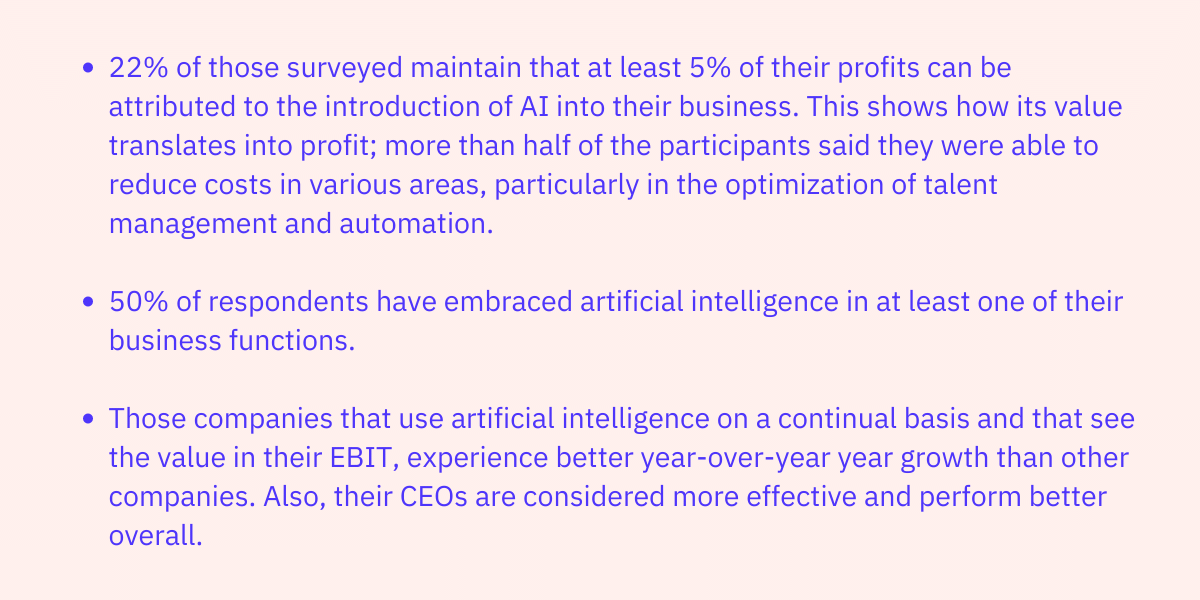 Source: Narrativa
Source: Narrativa
AI can help with every marketing decision a team or a marketer may come up with - and your influencer marketing strategy is no exception.
But reaching out to influencers with the power of ChatGPT is easier said than done.
- How are you going to do use ChatGPT to better your influencer marketing?
- What is the best way to reach out to an influencer anyway?
- And how is your message going to be targeted and personalised?
There is one answer to that, and it’s email outreach. Let’s see how you can perfect it with the use of an open source like ChatGPT.
- Why combine email with influencer marketing
- ChatGPT: What it is and what it can do for you
- How to use ChatGPT for your influencer marketing outreach
- What else should you consider
- Things to keep in mind while using ChatGPT for influencer marketing outreach
Why combine email with influencer marketing
Before we answer that, let’s take a look at a basic definition of influencer marketing:
Influencer marketing is a form of marketing that involves collaborating with influencers, aka users with a dedicated and engaged social media audience.
This audience follows such individuals across all social media - or other marketing - channels.
Typically, influencers have a significant impact on their audience’s behaviour, from their purchasing habits and decisions to, sometimes, their causes and social justice views.

Micro-Influencers vs. Macro-Influencers vs. Celebrities – Understanding The Difference
Leveraging influencer marketing for your brand can help boost your credibility, promote your authority and expertise, and make you better known to an audience you’d otherwise have a hard time reaching out to.
Generally speaking, influencers tend to promote products and services that are close to their audience’s preferences through all means possible - their social media accounts, a dedicated email newsletter they release with news and updates, or even YouTube videos that explain the use of the products they’re promoting.
Combining this dedication with a bulk email service provider that can analyse the influencer’s data and demographics, the audience’s interests, and preferences will surely help your brand - and the influencer - reach new levels of exposure.
When you send targeted emails to the influencer’s audience, you can tailor your message even further, increase engagement and bring valuable traffic back to your website.
So, how does this relate to reaching out to influencers through cold emails and using ChatGPT to convince them to collaborate with your brand?
It all comes down to recognising that influencers are not only influential figures but also potential customers who belong to a specific demographic.
By understanding this, you can effectively present ChatGPT with prompts that resonate with them and increase your chances of securing a collaboration.
ChatGPT: What it is and what it can do for you
Let’s go forward with a definition of ChatGPT.
ChatGPT is an advanced language model, designed to generate responses that resemble human communication. This allows the user to engage in a natural conversation with the generated content - or the tool itself.

Revolutionising Social Media Strategy with AI: Benefits, Tools, and Challenges
Natural language models can typically train the tool to interact with and learn from data and deliver messages more “human” with coherent and contextually relevant responses.
The platform’s capabilities allow it to engage and interact with users through information found in data, interactions, and the tool’s creative output that generates imaginative responses.
It’s an excellent tool for generating ideas, completing texts based on a prompt, or providing recommendations and even helping you create a cohesive and coherent marketing plan, email, or text message.
When creating your influencer outreach program, you must first understand the basis of communication. ChatGPT can be a valuable tool to help you convince and convert potential influencers to promoters through the following:
- ChatGPT can personalise outreach messages and create a meaningful connection through the plethora of data it uses. The reason behind this is the mere fact that a tailored message demonstrates a genuine interest in the influencer, their background, and their work as a whole.
- It can create content for your outreach emails and social media influencer campaigns. Compelling content and creative proposals are quite easy to generate, provided you’ve got the correct prompt.
- It allows you to follow up on time with reminders and can help you summarise and track important information. This saves time and effort on your part and allows for seamless communication.
Of course, none of the above means that the emails you’re going to generate are not supposed to be checked out by a human. Sometimes, AI language models come with some blunders that are expected. The newer the tool, the higher the possibility, as ChatGPT trains itself through data and its own mistakes.
How to use ChatGPT for your influencer outreach
With all that being said, let’s move forward and understand what exactly ChatGPT can do for your brand and how it can turn your cold outreach efforts into a full-blown influencer PR plan in five simple steps.
Use prompts to create the perfect pitch
Every outreach effort has to start with an idea. And ChatGPT needs that idea to make things work in your favour. So, start off by creating the perfect prompt for your influencer outreach campaign.
Prompts serve as the foundation for AI tools, providing a way to articulate your ideas and requests in a manner that enables the tool to comprehend your specific needs with comprehensive details fully.
Here are the steps to follow:
- Start with a simple request, like “Write a generic cold email that reaches out to X influencer”. You can either write the influencer’s name or describe their niche just to give the tool an idea of how you plan to interact with them.
- Refine the first draft with some personalization and ask the tool to omit any unnecessary jargon. Ask it to rewrite the email in 100 words or less.
- Click on the “Regenerate Response” button if you need to. The AI tool will give you an alternative answer to your prompt. At the same time, you will be helping the tool train itself and learn from its mistakes.
- Fine-tune details like CTA buttons or even the email’s tone. Try to be as specific as possible. Ask the tool to “Rewrite the email in a friendlier tone”, or “Optimize the content for a higher CTR” or “Create another one for a younger audience”.
Being as specific with your “order” as possible will help you move faster and create an email series with follow-ups that make sense. And yes, you can make sure to ask ChatGPT to create follow-ups of all the cold emails you’ve generated.
Ask ChatGPT to create the perfect email subject line
The great thing about an AI tool is that it can generate a lot of content for you to test and optimise as a writer, marketer, or even solopreneur in no time. And email subject lines are among the most important pieces of content a marketer can create.
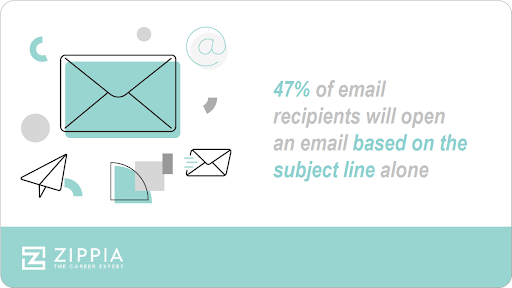 Source: Zippia
Source: Zippia
So, go ahead and use another prompt, like “Can you create twenty different subject lines for cold influencer outreach for leads that came from LinkedIn prospecting?” This is a fine way to address your tool and make it distinguish the fine differences between the influencer outreach campaigns you’re going to set.
Of course, you’ll need to be as specific as possible again. “In X words or less”, “Include an emoji”, and “Include personalisation fields” are phrases your prompt should have.
Also, don’t forget to specify your audience in terms of demographics, psychographics, and location. It will be quite helpful for ChatGPT - or any AI tool, for that matter - to understand the fine differences between the various influencers you’re going to target.
Ask ChatGPT to make the calculations for you
Sometimes, calculators won’t do, especially when your situation is a little bit more complicated.
When creating an influencer marketing campaign, you’ll need to do some spot-on budgeting and understand how you should share your assets before you even reach out for a possible collaboration.
This is where ChatGPT comes in. Just make sure you understand how you want to share your budget and what your marketing and business goals are.
For example, let’s say that you’re sending a cold outreach campaign to a micro-influencer with a very niche crowd that matches your audience.
They won’t cost you anything - or almost - but how many people are expected to see their posts, and what is your expected traffic?
Start asking ChatGPT those questions:
- “If my views on this influencer campaign are X and the influencer cost me Y, what is my Cost Per Mille (CPM)?”
or
- “If I spent X on this cold outreach campaign, and my revenue ended up being Y, what is my ROI?”
Of course, to be able to come up with these prompts, you’ll need to know what your goals are first and how they match your business goals as a whole. Don’t start thinking about calculation prompts without coming up with a solid marketing plan first.
Identify and generate the perfect content according to influencer
This task is a little trickier, seeing as identifying and generating the perfect content according to the influencer is a task that can’t be done with AI tools alone.
The first thing to do would be to research the influencer yourself as a marketer.
You can always ask ChatGPT for a small overview of their style or audience, but their aesthetic, the topics they cover, and the lead generation tools they use are all things you’ll need to understand on your own and find out how to be on par with their unique tone of voice and preferences.
After that, go ahead and analyse the influencer’s engagement patterns. Look for common themes, trends, and content that resonates well with their followers and see how your content can interact with them.

Content Pillars: The Secret to Brand’s Social Media Success
And now, it’s time to leverage ChatGPT to generate content ideas. Engage in a conversation with ChatGPT.
Create prompts with all the information needed about the influencer, their niche, and your campaign’s objectives. Ask ChatGPT for content suggestions, headlines, or creative angles that align with the influencer's style.
At this stage, you have all the content ideas in your hands, and you just need to refine them and make sure they align with your brand guidelines, campaign goals, and the influencer's preferences.
Customise the generated ideas to align with your brand. At the same time, ensure it maintains a natural fit within the influencer’s content strategy.
Lastly, present your ideas to the influencer, and ask for their feedback. It’s important to have their opinion on what will be presented on their social media pages.
You can fine-tune everything with them and understand what stands out to them and how you can create even better content as you go along.
Be versatile in your influencer outreach suggestions
No influencer wants the same thing as the next, especially when brands go ahead and contact them through cold outreach email campaigns.
Some prefer email giveaways that nurture their audience and showcase the brand they collaborate with, and some love Instagram posts. So, how are you going to cover all areas of interest with ChatGPT?
First of all, make sure to tailor suggestions to different platforms. Each platform has its own unique format and audience.
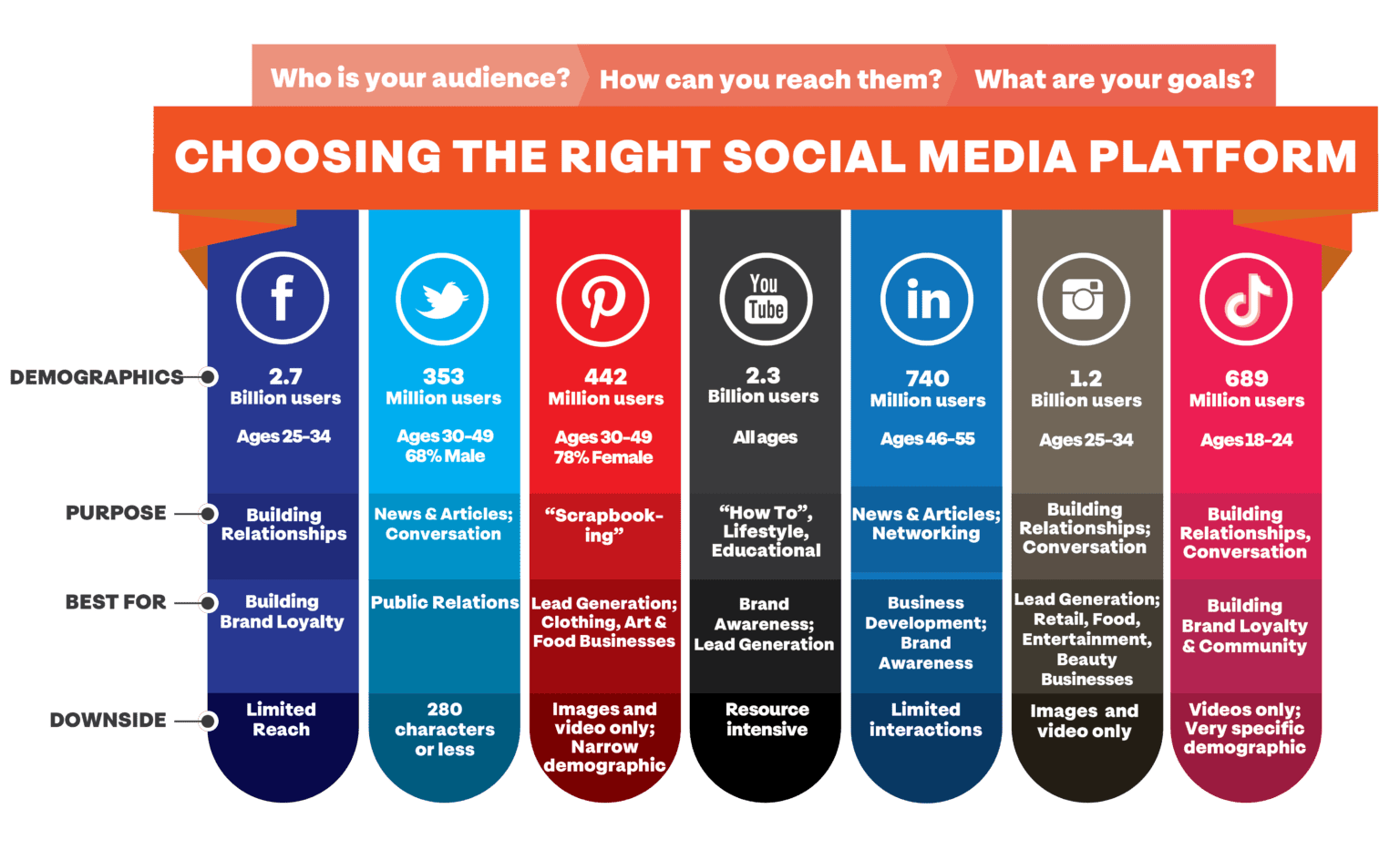 Source: Accion Opportunity Fund
Source: Accion Opportunity Fund
Different formats are fantastic for different demographics and platforms. This is what you need to take into consideration when offering a collaboration opportunity to an influencer. Provide suggestions for different types of partnerships, such as:
- Sponsored posts
- Product reviews
- Unboxing videos
- Tutorials
- Email/social media giveaways
- Live streams
- Guest blogging
Being versatile allows influencers to choose the collaboration type that best suits their preferences and expertise, whether it's short-form videos, long-form blog posts, or interactive content.
Offer versatile suggestions that encompass various content formats to accommodate the influencer's style and their audience's preferences.
Also, be mindful of your goals and theirs. Influencer campaigns can serve various objectives, such as brand awareness, product promotion, or generating traffic.
Tailor your influencer outreach based on the campaign goals and showcase how the collaboration can contribute to achieving those goals.

Also, try using ChatGPT to customise suggestions based on the influencer's interests. Ask ChatGPT for an overview of their values and previous collaborations.
Show that you have taken the time to understand their content and how your brands align. This will create a genuine connection and increase the likelihood of a positive response.
Of course, never forget to pepper your UVP into your influencer outreach campaigns. What are the unique benefits and opportunities that come with collaborating with your brand?
Make sure to highlight this as well, be it more exposure for the influencer or a product that comes as an added bonus.
What else should you consider
Of course, the above are just some of the bits and pieces you’ll need to have in mind before proceeding with crafting the perfect influencer marketing outreach email. Perhaps you’ll need to make a good first impression through another platform or consider using referral marketing in tandem with your influencer campaigns.
Craft a social media outreach campaign first
Crafting a social media outreach campaign with ChatGPT can help you create tailored and engaging content. But should you prioritize it before your email campaign?
Let’s see what it can do for your social media outreach campaign before we answer that question.
First of all, ChatGPT can identify target influencers by helping you brainstorm and generate a list of potential influencers who align with your brand, target audience, and campaign objectives.
Again, writing the perfect prompt is vital.
“My business is X and my perfect customer is Y and Z.” should be things included in your prompt.
Provide relevant information about your brand, industry, and the type of influencers you're seeking, and let ChatGPT create a list of influencers based on their expertise, reach, and relevance to your niche.
Once you have your list, use ChatGPT to analyze their social media profiles. Go for posts, audience engagement, and frequency first.
After that, make sure you understand the style and tone and how it can work with your brand. ChatGPT can help you figure out the influencers' preferences and tailor your outreach strategy.
Now, you can use ChatGPT the same way you used it for your email marketing outreach. Draft personalized outreach messages for each influencer. with key details:
Their name, specific content you enjoyed, and why you believe collaborating with them would be mutually beneficial.
And now, let’s answer the question: Why should your cold emails come after your social media outreach in our case?
The answer is quite simple.
It will make your cold email campaign look not-so-cold. Social media outreach allows you to initiate and nurture relationships with influencers before approaching them with a formal email campaign. It also helps you demonstrate familiarity.
When you reach out to influencers via social media, you can reference their recent content or interactions and build a genuine connection.
This increases the likelihood of a positive response. Also, engaging with influencers on social media allows you to interact with their followers and make them familiar with your product and niche, providing the influencer with all the social proof they will need.
All in all, a successful social media outreach campaign can be the “informal” starter of an official email outreach campaign that will help you build rapport and start luring the influencer and their audience slowly but surely.
Want to test out how well ChatGPT is working for you? Consider using a tool like Sendible that includes access to a social media analytics dashboard. This way you can understand exactly what is working for your business.
Use a social media calendar
Using a social media calendar for your influencer outreach campaign is like using a purse for your coins: You don’t actually need it, but it helps you keep things in one place and organized.

How to Create a Social Media Content Calendar for Your Agency Clients
A social media calendar enables you to plan and schedule your influencer collaborations consistently and sensibly.
It helps you maintain a regular cadence of content and ensures that your messaging is spread out evenly. Consistency is key for building and maintaining engagement, and you don’t want your influencer content to go out without a plan.
Using a social media calendar will help you plan your influencer collaborations, identify the dates, platforms, and specific content you want to promote, and allow you to have a clear roadmap for your campaign.
This helps you avoid last-minute blunders and align your influencer collaborations with your overall campaign objectives.
Strategic scheduling can go a long way, especially considering the timing and sequencing of collaborations.
A post may be scheduled for many months down the line. A social media calendar can ensure that your messaging is cohesive, relevant, and aligned with your brand's goals. It helps you maintain focus and consistency in your campaign narrative.
Finally, using a social media calendar will help you track, pinpoint, and analyze your posts. And you can always use ChatGPT to analyze and figure out what steps to take next. Just ask for a small brainstorming session with the perfect prompt.
Identify your preferred social media platforms
Each social media platform has its own distinct user base, content formats, and engagement patterns.
By understanding the characteristics of different platforms, you can effectively tailor your influencer collaborations and talk to your ideal audience right off the bat.
At first, you’ll need to identify your preferred platforms.
Which are the ones that allow you to target your influencer outreach efforts and reach the perfect audience through the perfect content format?
Focusing on platforms where your target audience is most active will ensure that your message reaches users most likely to engage with your brand.
Of course, at this stage, you’ll need to understand each platform’s unique ecosystem. What is the content style that performs best? What do users expect?
YouTube is for videos of all kinds, but TikTok users don’t seem to love 10-minute explainer videos.
Choosing platforms that align with your brand and campaign objectives will help you create content that feels natural within the platform's own ecosystem.
This enhances the authenticity of your influencer collaborations and increases the likelihood of positive engagement from the platform's audience.
Furthermore, identifying preferred platforms enables you to leverage the strengths of each platform.
For Instagram may be ideal for visual campaigns, YouTube for long-form video content, and Twitter for real-time engagement. The strengths and limitations of each platform will show you how you can leverage it to boost your influencer message and achieve your goals.

Niche Hashtags Goldmine: Elevate Your Social Media Strategy with Industry-Specific Hashtags
Identify niche influencers
Identifying niche influencers is a valuable strategy in influencer marketing. Niche influencers have a smaller but highly engaged audience with specific interests.
For starters, make sure to define your target audience and their specific interests or needs.
How do they fall under specific sub-categories that niche influencers cater to?
Then, conduct extensive research on social media platforms, blogs, forums, and industry publications to discover influencers who cater to that niche.

How to Use Twitter Lists to Unleash Lead Generation, Influencer Marketing, and More
Look for influencers who consistently create content relevant to your niche and demonstrate deep knowledge and passion in that area.
Evaluate their engagement rates, audience demographics, and the quality of their content and explore tools and platforms that specialise in audience analysis.
Look into those insights and understand how the niche influencer you’re reaching out to is relevant, how their audience’s demographics can help you, and how their engagement metrics can bring you closer to your goals.
Identifying niche influencers is essential because they offer unique advantages.
Their smaller but highly engaged audience tends to have a strong interest and trust in their recommendations.
Collaborating with niche influencers allows for more targeted messaging, seeing as it reaches a highly relevant audience that is more likely to convert.
Niche influencers also provide the opportunity to tap into specialized expertise, niche trends, and communities.
Identify your goals and how they align with your business goals as a whole
Identifying your influencer outreach goals and aligning them with your overall business goals is crucial for a successful influencer marketing strategy.
It involves a strategic approach to ensure that your influencer collaborations are worth the time, effort, and resources.

Your Pocket Guide to Setting Measurable Social Media Goals
Start by clearly defining your business goals and understanding the type of influencer collaboration that aligns with them.
For example, increasing brand awareness works perfectly with a YouTube video, while driving website traffic would be optimal through guest blogging.
Once you have a clear understanding of your business goals, you can identify specific influencer outreach goals that align with them.
Once you have a clear understanding of your objectives, try to identify specific influencer outreach goals that support and align with them.
For example, if your business goal is to increase brand awareness, your influencer outreach goal may be to collaborate with influencers who have a wide reach and highly engaged audience, focusing on maximizing exposure and brand mentions.
On the other hand, if your goal is to drive sales, your influencer outreach goal may be to partner with influencers known for their ability to drive conversion.
Aligning your influencer outreach goals with your business goals will be your first step towards creating a results-driven strategy that ensures your influencer marketing efforts contribute meaningfully to your overall business success.
This alignment allows you to measure the effectiveness of your influencer collaborations, track their impact on your business goals, and make informed decisions to optimize your influencer marketing strategy.
Always follow up
Remember what I mentioned in the beginning about creating follow-up emails with ChatGPT for each cold email you come up with? There’s a reason behind that:
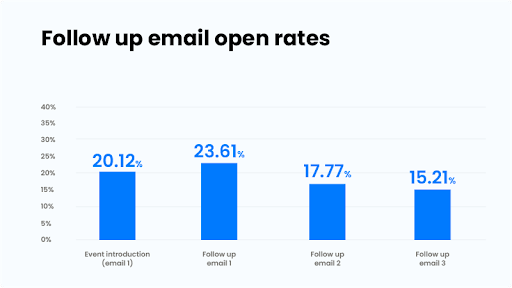 Source: LeadSquared
Source: LeadSquared
Not following up can reduce your chances of creating the influencer campaign of your dreams by a lot, as evident by the statistic above.
Just make sure to always check the quality of your follow-up’s copy.
It should be short, sweet, and have a direct correlation to the previous email you sent. If you’re unsure, ask ChatGPT to check the copy for you, identify the mistakes, and help you create a better version of your body copy.
Things to keep in mind while using ChatGPT for influencer outreach
ChatGPT is a fantastic tool that can help you create more for less. Use it if you want a plethora of subject lines and body copies to A/B test.
AI tools can really transform your data into meaningful marketing plans, influencer campaigns, and emails that matter.
However, there are some things you should keep in mind:
- Always check your emails. There have been and will be instances where AI tools go through a blunder themselves. You need to make sure your email is pristine before sending it.
- Don’t over-rely on AI. At this stage, it’s quite easy to understand that something is not entirely human. Make sure to use AI wisely and use your own wit for the more challenging cases.
- Double-check and paraphrase wherever possible. You don’t want two similar prompts to generate the same reply. Try to make the most of your human abilities by spicing up texts and collaboration proposals wherever possible.
- Be human. The model is H2H now; forget about B2B or B2C. Be as human as possible, try to reply yourself from one point on, and strike meaningful conversations in your email outreach campaign. Maintaining a fine balance between AI and the human touch is essential.
Remember, the good thing about influencer marketing is that you’re talking to someone that is a prospective customer.
Don’t let that idea go to waste by being overly technical or too focused on using AI tools to achieve your goal.
The takeaway
ChatGPT has changed our lives and will continue to do so as marketers use it more and more each day.
Don’t be too afraid of such a tool. Use it to complete mundane tasks like writing your emails, performing summaries, and analyzing data.
And provide it with your own human touch after that, to create the perfect email outreach campaign for your influencer marketing.
Téa Liarokapi
Téa Liarokapi is a Senior Content Writer for Moosend, an email marketing and marketing automation platform, and an obsessive writer in general. In her free time, she tries to find new ways to stuff more books in her bookcase and content ideas - and cats - to play with.
Text copied!

